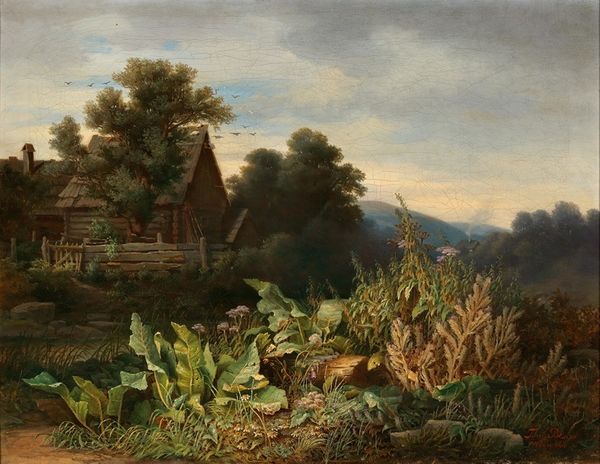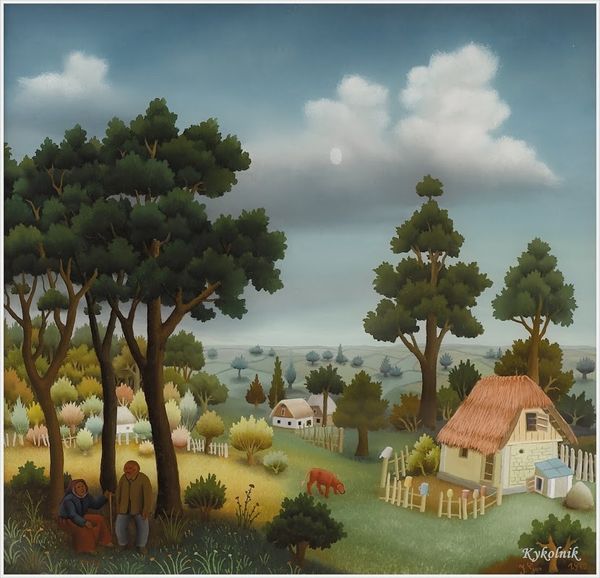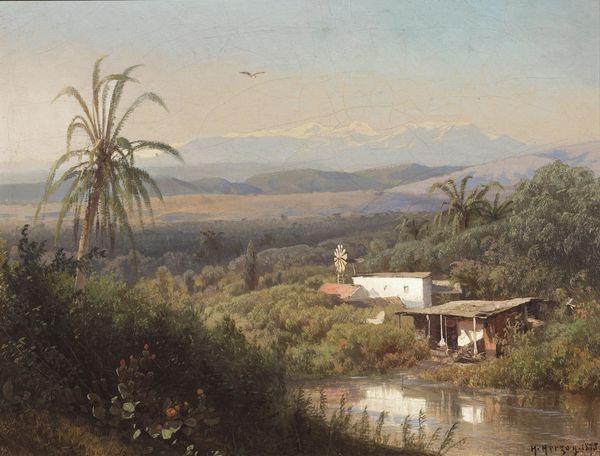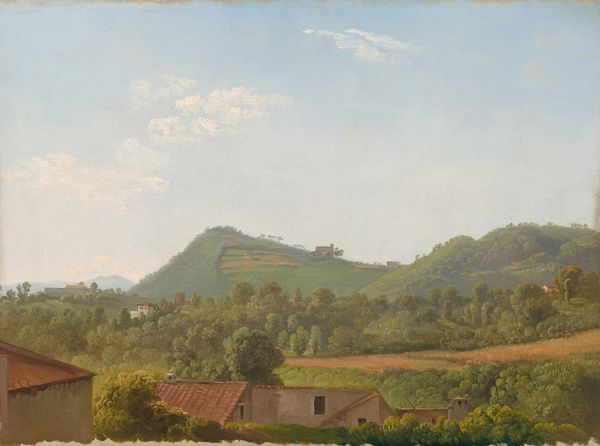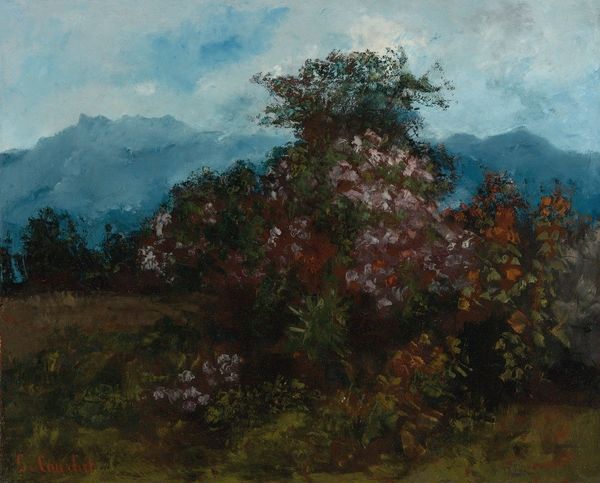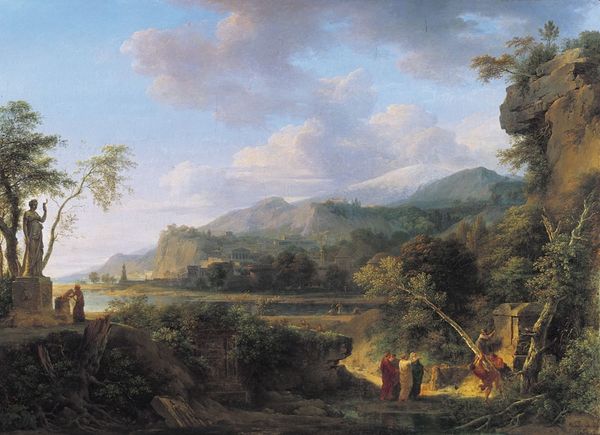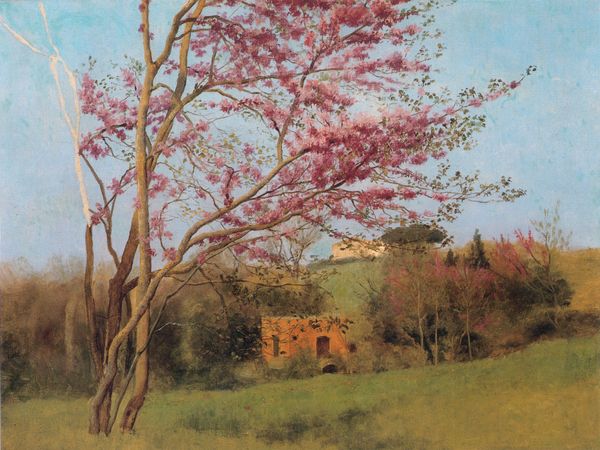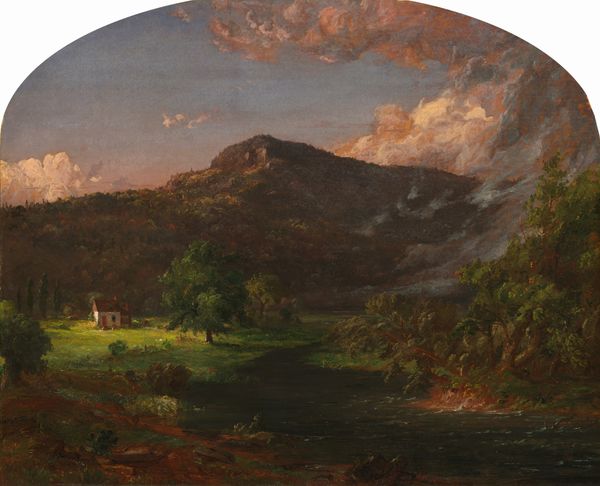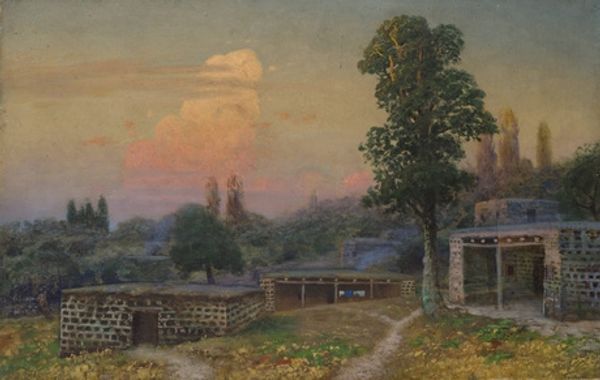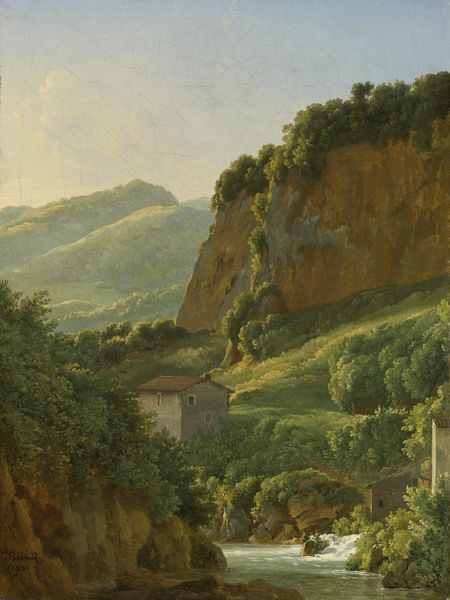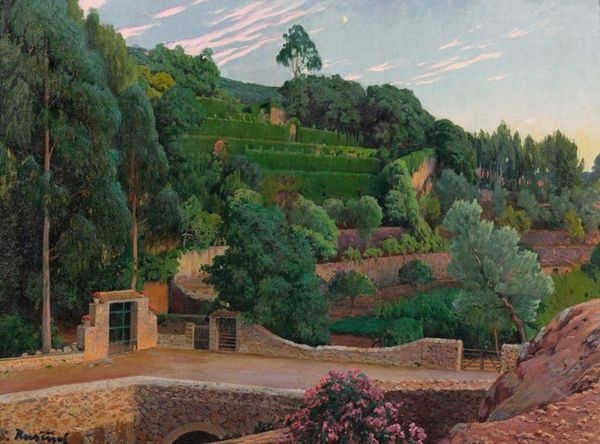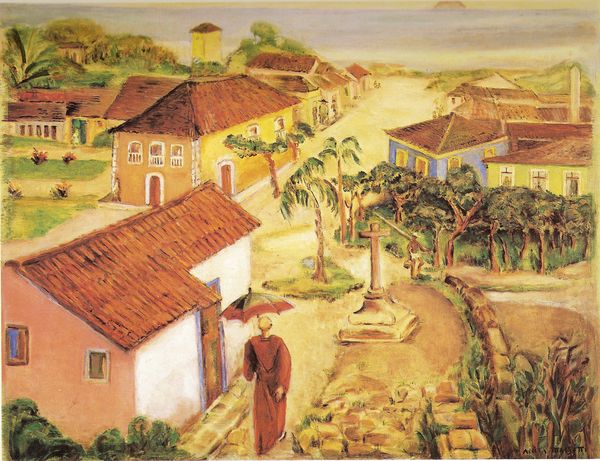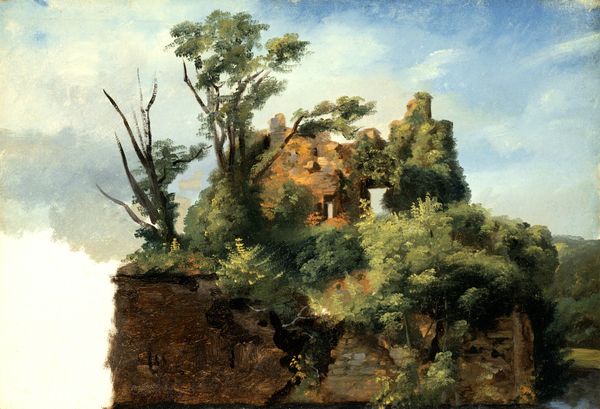
A View of the Artist's House and Garden in Mills Plains, Van Diemen's Land (Tasmania) 1835
0:00
0:00
painting, plein-air, oil-paint
#
tree
#
garden
#
sky
#
rural-area
#
painting
#
plein-air
#
oil-paint
#
landscape
#
house
#
impressionist landscape
#
oil painting
#
romanticism
#
cloud
#
realism
Dimensions: 76.4 x 114.4 cm
Copyright: Public domain
Curator: Here we have John Glover’s "A View of the Artist's House and Garden in Mills Plains, Van Diemen's Land (Tasmania)," created around 1835. Isn’t it simply bursting with life? Editor: It's fascinating! I'm immediately struck by the way everything seems meticulously cultivated. I'm also drawn in by the sheer density of flora. You can tell a lot of effort went into this estate. Curator: Absolutely, you feel the nurturing presence immediately. It is more than a residence; it's a personal Eden. There's a sense of pride in cultivating this bit of "home" far from home in what was then a new colony. You can feel a hint of sadness there too. Editor: Sadness? I was thinking about the labor. Someone, or more likely several someones, spent countless hours coaxing these European garden plants from Australian soil, not to mention building this home and farm. I am sure that at the time that landscape had to be "manufactured." Curator: Yes, but for whom was the work carried out, and at whose expense? You see this house standing proudly amidst what seems like untamed wilderness. But it isn't, the house dominates that space that existed, where others lived, but were not represented here. Editor: Good point. It is painted *en plein air*, a technique favored by artists who were responding to industrialization by immersing themselves in and representing nature. So we have Glover taking this very romantic approach but also staking a claim of private property using canvas and paint. Curator: Indeed, but don't dismiss his sentiment. Remember that the Romantic movement celebrated raw, untamed nature, and Glover, by showing the interplay between his garden and the broader landscape, speaks to the powerful idea of harmony and control of landscape at the same time. Editor: The house itself looks like it came straight from England, those brick facades suggest wealth and stability, transplanted rather forcefully into Tasmania. But tell me, can we ignore that little pond off in the corner of the estate in the middle ground? It seems out of scale somehow. Curator: The little details, I think they invite a personal interpretation. Does that pool speak to Glover’s reflections, a metaphor for his internal world? What is he thinking about his native land and its people? Or, more brutally, could it have been used to source materials for bricks to create the residence and out buildings? Editor: Well, seeing all of those plants massed like that has really changed my view on the landscape genre. Now I am more focused on what human enterprise it took to realize such paintings, and the landscapes they depict. Curator: For me, it still hums with feeling, reminding me that landscapes aren't just scenes but fragments of an experience, with many ways to relate to the natural world.
Comments
No comments
Be the first to comment and join the conversation on the ultimate creative platform.
